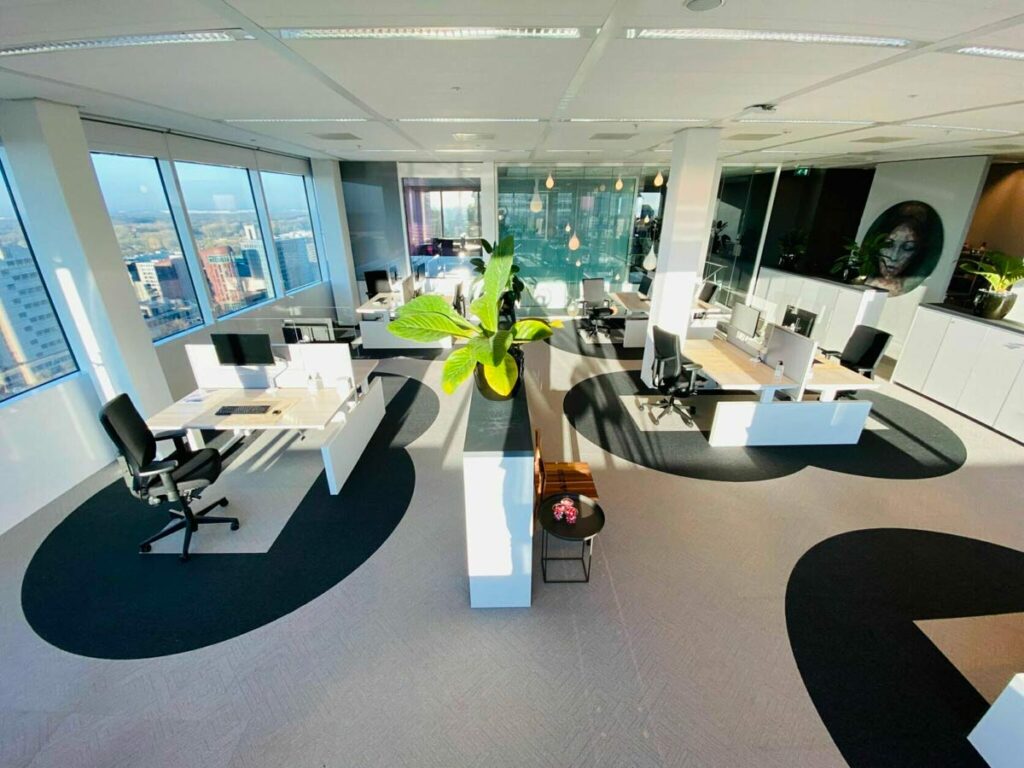The great enforced work-from-home experiment that resulted from the COVID-19 crisis has been eye-opening. Entire companies declared it a great success and workers themselves were wondering if they would ever want to return to the office. However, after an extended period, we’ve already added new phrases to the workplace lexicon like ‘Zoom fatigue’ and ‘Home office burnout’. For various reasons, some people simply have to get back to the office and this places a great task ahead of office managers – to prepare a safe office space.
In short, many businesses have found that they are more robust and capable of all-remote work than they ever imagined, but it is not a long-term solution. A recent Forbes article stated that “nearly three-quarters of CFOs and other finance executives expect they will move at least 5% of their on-site workforce to work-from-home after the pandemic”.
To look at that statistic from the other side: nearly 95% will be back at the office when the doors are open again. However, fully resuming office work as it was before the crisis will be a long, slow process and one that needs a solid and well-thought-out strategy. Here are the four areas which businesses need to take into account and how we’ve rapidly adapted Bookado to help get back to something like business as usual.
Mapping the office
Mapping the office was always about measuring square footage to squeeze as many people as possible into a given space and maximize resources. Since the arrival of COVID-19, it has almost taken on the complete opposite meaning. Companies need to measure and re-measure every inch of floor space to then limit the number of people who can safely use it. However, the end goal is largely the same: to get as many people safely working in each given space as possible. It is only the regulations and legal allowances that are different.
You need to make a detailed floor plan of each office and meeting room and allow the legally accepted safe space around each employee’s workstation. However, that is the easy part because these are the areas in which people are sitting still. The challenge is to map and model the flow of people in corridors, kitchens, and elevators. If you are only mapping work stations, you are missing the places where people interact in the most confined areas of your office space.
Call in the experts
Limiting the number of workers in the office and strictly following legal guidelines is vitally important to businesses for a number of reasons, which range from human to operational to legal.
- Fear of the virus and the stress caused by working in crowded workplaces will negatively influence employees’ wellbeing (and their effectiveness)
- If any member of staff displays symptoms of the virus, they and anyone they have come into contact with will have to self-isolate. Having less people in the office limits the potential disruption from such situations
- Businesses which do have cases of the virus and have not followed guidelines strictly may find themselves open to penalties from the government and even class-action lawsuits from employees in extreme cases
Companies can attempt to manage these new office spaces themselves, but a whole new industry is already growing around ‘COVID consultancy’. Some businesses have pivoted to consulting and providing implementable solutions such as the 6-Feet Office project.

Bookado has taken a similar track. It became clear quite early that our office booking system using AR stickers had the in-built flexibility to be adapted into a desk reservation system. We’ve researched and learned how the office will work in the current restrictive climate, so clients don’t need to come to us with their own projected use of space. As long as we have an office floor plan, we can create and curate the way the reservations should work and where.
Pandemic office hygiene
All changes to office spaces require successfully encouraging employees to change their own behavior and continue to do so for a longer period of time. For example, masks only help if they are worn correctly and separated desks only make sense if employees respect the rules and keep their distance from one another.

The same goes for hygiene measures. Cleaning services are now being employed by most offices to go beyond the tidy up and vacuuming services of the past. The new norm is a deep cleanse of the office space, particularly touchpoints like door handles and lift buttons. However, this only works to a certain extent. it will also be necessary to provide workers with disinfectants and teach them to change habits. Workers will be expected to disinfect hands before entering the office, as well as to regularly wipe down door handles and lift buttons throughout the day to minimize the risk of virus contraction.
Technology for safe office space
The most effective technology we can bring into the office will be that which eliminates the possibility of humans not following the rules. For example, Bookado uses AR markers to completely reduce the human touchpoint from conference room or desk booking. Each person scans an AR marker on a desk or door and then books rooms or resources using the application on their own mobile phone. This means no more communal wall-mounted touch screens, so workers don’t need to worry if the person before them thoroughly cleaned their hands. Human error or negligence does not cause a fault in the system. This is the kind of technology that offices will need—especially as time passes and workers become more complacent about the risk posed by the virus.
Technology solutions need to be effective but we must also remember that the pandemic has caused an almost unprecedented downturn in the economy. We have a global recession and most businesses are not winning from the crisis. Throwing money at the problem is not going to work when budgets are stripped to the bare bones.
Bookado reduces the costs of meeting room reservation but innovators need to find technological solutions to other pressing and urgent problems. For example, air conditioning and ventilation systems recycle and circulate air around the whole building. Social distancing between desks is of no consequence if contaminated air from a worker on the first floor of the building can be distributed around the whole office space in minutes. Cheap, effective filters are probably an answer to such a problem but they are, as yet, not proven to work and are not widely available. This is the challenge that we face in the office in a time of global pandemic. However, solutions such as Bookado are proving that we are up to the task of innovating at scale and with more restrictive budgets in mind. Step-by-step, each of these small solutions is tackling some part of the larger problem and getting the world working again.




